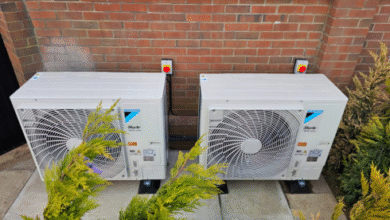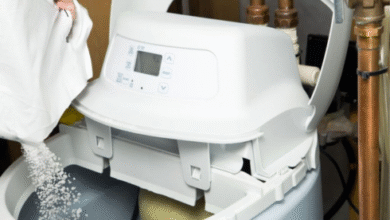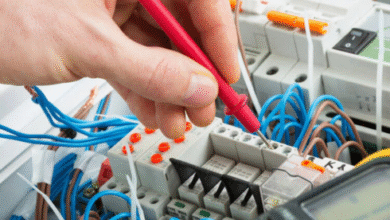What’s Really in Your Tap? Why Free Water Testing in Utah Is Worth a Closer Look

Most of us take water for granted. You turn on the tap, fill up your glass, and assume everything’s fine. It’s clear, it’s cold, and hey—it doesn’t taste weird. But here’s the catch: just because your water looks clean doesn’t mean it is.
In Utah, where geology meets extreme weather, your water can be loaded with minerals, sediment, or even chemical contaminants depending on where you live. And while it’s true that municipal water generally meets safety standards, “safe” doesn’t always mean “ideal.”
That’s where the beauty of free water testing Utah services comes in. Seriously—no cost, no obligation, just real information about the stuff you and your family are using every single day. And if you live in southern Utah? There’s even free water testing St. George residents can take advantage of with just a phone call or a quick online form.
So, let’s break down what water testing actually reveals, why it matters more than you think, and how it might just change the way you feel about your water.
Utah’s Water: Beautiful, but Not Always Balanced
Let’s give Utah some credit—this state is stunning. Mountains, deserts, canyons… you name it. But all that natural beauty comes with a price when it comes to water quality. Groundwater here is often packed with dissolved minerals. That’s great for geology lovers, not so great for your pipes, skin, or coffee maker.
Depending on where you are in Utah, your water might contain:
- Hardness minerals like calcium and magnesium
- Chlorine or chloramines from city treatment
- Iron, manganese, or sulfur
- Sediment, rust, or microbial contaminants
- Nitrates from nearby agriculture
Some of these aren’t harmful, but others can affect everything from how your appliances run to how your skin feels after a shower. And unless you test your water, you’ll never really know what’s coming through the tap.
So… What Is Free Water Testing, Really?
Free water testing might sound like a gimmick, but the legit services aren’t trying to sell you a filter five minutes after walking through the door. A good water test involves a trained technician (or a mail-in kit) analyzing a sample of your water for a range of things—hardness, pH, chlorine levels, iron content, and more.
Most tests focus on:
- Hardness level – Is your water coating your pipes and shortening appliance lifespan?
- Total dissolved solids (TDS) – A general measure of minerals or salts in the water.
- Iron and sulfur – Responsible for metallic tastes and that rotten egg smell.
- Chlorine – Safe at certain levels, but often irritating to skin and lungs.
- pH – Too low and your pipes can corrode; too high and it can taste soapy.
- Microbes (in some tests) – For folks on private wells especially.
And the best part? They’ll often give you a clear report on what they found—no pressure to buy anything, no surprises.
Why Free Water Testing in St. George Is Especially Helpful
Southern Utah has a unique relationship with water. The climate is dry, the soil is mineral-rich, and the water is really hard. In places like St. George, it’s not uncommon to see faucet heads that look like they’ve been dipped in chalk or dishwashers that need constant TLC.
That’s why free water testing St. George services are gaining traction. Whether you’re a homeowner, a property manager, or just renting a place, knowing your water’s mineral profile is a smart move.
Local water can vary a lot—even from neighborhood to neighborhood. Some homes might have moderate hardness, others off-the-charts. A simple test clears up the guesswork and helps you decide whether you actually need a softener or filtration system—or maybe just a tweak to the one you’ve already got.
What Can You Do with the Results?
Great question. Once you know what’s in your water, you can make smart decisions:
- Too much hardness? Consider a water softener. It’ll protect pipes, extend appliance life, and even help your hair feel less dry.
- Chlorine overload? Maybe a carbon filter or whole-home system will take the edge off.
- High TDS? Reverse osmosis might be the right call for your drinking water.
- Odd taste or smell? Pinpoint the source and filter accordingly—no more guessing.
Knowledge is power, and when it comes to water, it’s also about peace of mind. You use water for drinking, cooking, cleaning, bathing—it touches almost every part of your day. Why wouldn’t you want to know what’s in it?
No Risk, Big Reward
Here’s the thing—getting your water tested doesn’t lock you into anything. It’s not like buying a car or signing up for a subscription. It’s more like checking your tire pressure. Simple, smart, and ultimately in your best interest.
And if you do need a solution? At least you’re making that call with clear, tested facts in front of you—not because you were guessing or reacting to a problem too late.
The Bottom Line: It’s Time to Test the Waters (Literally)
In the grand scheme of things, free water testing might seem like a small thing. But small things have a way of snowballing. A clogged pipe. A ruined water heater. A mystery rash no one can explain. Water is one of those silent contributors to everyday life—and when it’s not quite right, everything else starts to feel off.
So if you’ve never tested your water, or it’s been years since you last did, don’t wait for a problem to creep in. Take advantage of free water testing Utah providers are offering. Especially if you’re in St. George, where water quality can change block by block.
Because when it comes to your water, guessing shouldn’t be part of the plan.




